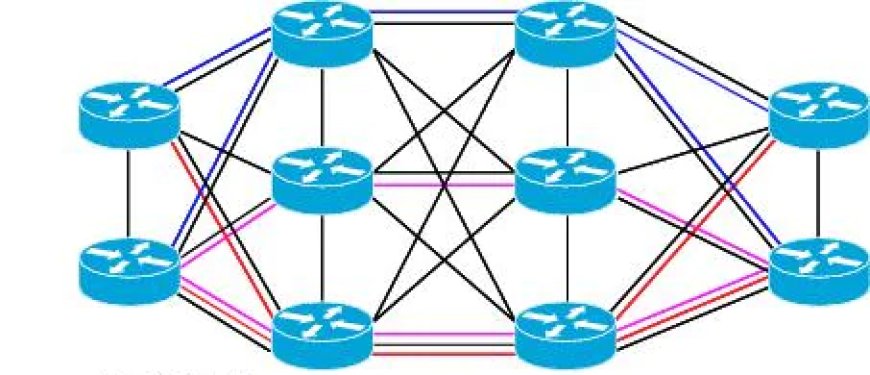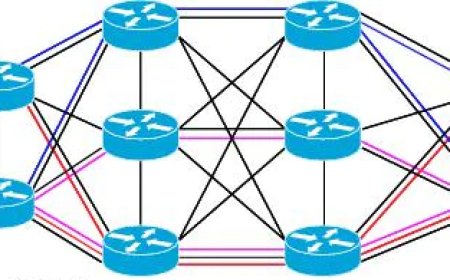Link Aggregation Control Protocol (LACP) Explained
In the realm of networking, efficiency and reliability are paramount. To meet the demands of modern networks, technologies like Link Aggregation Control Protocol (LACP) have emerged, revolutionizing the way we manage network links. In this article, we delve into the intricacies of LACP, exploring its definition, benefits, drawbacks, and configuration methods, drawing insights from Cisco documentation and configuration guides.

Link Aggregation Control Protocol (LACP) is a standardized method for dynamically aggregating multiple physical links into a single logical link, known as a Link Aggregation Group (LAG) or EtherChannel. LACP enables devices, such as switches and routers, to negotiate the formation of these aggregated links, optimizing bandwidth utilization and enhancing network resilience.
Before the advent of LACP, static link aggregation techniques were prevalent. Administrators would manually configure link aggregation by bundling multiple physical links together, often leading to inefficiencies and suboptimal load balancing. Additionally, manual configuration lacked the dynamic adaptability required to respond to network changes effectively.
Benefits of LACP:
- Dynamic Link Aggregation: LACP dynamically adjusts the aggregation of links based on network conditions, ensuring optimal utilization of available bandwidth.
- Enhanced Resilience: By distributing traffic across multiple links, LACP improves network resilience and fault tolerance, minimizing the impact of link failures.
- Simplified Management: LACP automates the process of link aggregation, reducing the need for manual intervention and streamlining network management tasks.
- Improved Load Balancing: LACP intelligently distributes traffic across aggregated links, preventing congestion on individual links and optimizing overall network performance.
Cons of LACP:
- Compatibility Concerns: LACP requires support from both ends of the link (e.g., switches, routers), and interoperability issues may arise if devices from different vendors don't fully adhere to the LACP standard.
- Complexity: Configuring and troubleshooting LACP deployments may require advanced networking knowledge, particularly in larger-scale environments.
- Overhead: LACP introduces additional protocol overhead, which can impact network performance, albeit minimally.
Configuring LACP: Configuring LACP on Cisco devices involves several steps, as outlined in Cisco documentation and configuration guides:
- Enable LACP: Ensure LACP is enabled on the relevant interfaces using the
lacpcommand. - Configure Port Channels: Create port channels and assign member interfaces using the
channel-groupcommand. - Adjust Parameters: Fine-tune LACP parameters such as mode (active/passive), timeout, and load-balancing algorithm to align with network requirements.
- Verify Configuration: Verify the LACP configuration using the
show lacpandshow interfaces port-channelcommands to ensure proper operation
Link Aggregation Control Protocol (LACP) (802.3ad) for Gigabit Interfaces - Cisco
Configuring LACP (802.3ad) for Gigabit Interfaces
Perform this task to create a port channel with two bundled ports. You can configure a maximum of four bundled ports per port channel
enable
configure terminal
interface port-channel number
ip address ip_address mask
interface type slot/subslot/port
no ip address
channel-group number mode {active | passive}
exit
interface type slot/subslot/port
no ip address
channel-group number mode {active | passive}
end
DETAILED STEPS
Router> enable
Router# configure terminal
Router(config)# interface port-channel 1
Router(config-if)# ip address 10.1.1.1 255.255.255.0
Router(config-if)# interface g2/0/0
Router(config-if)# no ip address
Router(config-if)# channel-group 1 mode active
Router(config-if)# exit
Router(config)# interface g4/0/0
Router(config-if)# no ip address
Router(config-if)# channel-group 1 mode active
Router(config-if)# end
So, In the ever-evolving landscape of networking, technologies like LACP play a crucial role in optimizing performance, resilience, and manageability. By dynamically aggregating links and automating the process of link management, LACP empowers organizations to build robust and scalable networks that meet the demands of modern business operations.
Through a comprehensive understanding of LACP's benefits, drawbacks, and configuration nuances, network administrators can harness its full potential to create agile and efficient network infrastructures, driving business success in the digital age.
What's Your Reaction?

























